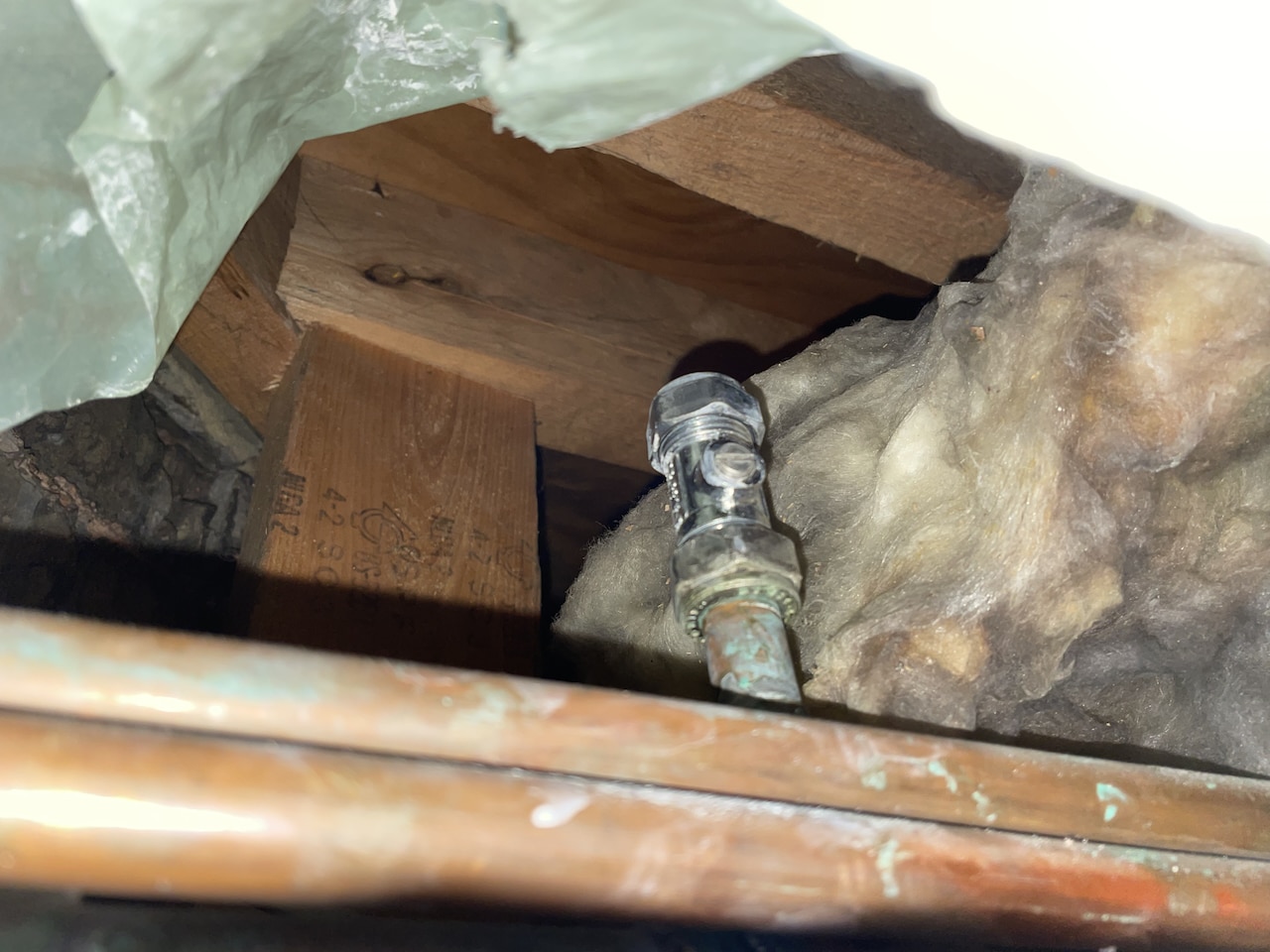- Messages
- 3
Hi,
DIY homeowner here.
Ist floor of house. Front bathroom hot water draws from cylinder which is heated by the Greenstar 28i Junior Combi located on the same floor. To get from cylinder to bathroom, the water goes up, horizontally over a stairhead, and back down into the bathroom.
After pumped bath is run, we often get an airblock to bathroom that I have to clear by running a pipe from the rising main!
I remembered that when this was all plumbed years ago, the plumber told me he'd placed an air vent in the horixontal run over the stairhead (the highest poiunt on the journey), so yesterday I cut away some plaster to take a look. (See picture)
I'm confused. This just looks like an ordinary inline flow valve to me, mounted on the vertical of a copper T join soldered into the pipe. If I have the screw set to horizontal, as you'd expect, the water just flows through the pipe. If I turn it 90 degrees the water spurts out of the top of the valve.
Is that actually an air vent valve, or is there meant to be an auto air vent valve screwed into that T with the valve slot then turned to the vertical?
If it needs an auto air vent, please could you give me a link or at least the name of exactly what to buy?
Thank you - Laurence

DIY homeowner here.
Ist floor of house. Front bathroom hot water draws from cylinder which is heated by the Greenstar 28i Junior Combi located on the same floor. To get from cylinder to bathroom, the water goes up, horizontally over a stairhead, and back down into the bathroom.
After pumped bath is run, we often get an airblock to bathroom that I have to clear by running a pipe from the rising main!
I remembered that when this was all plumbed years ago, the plumber told me he'd placed an air vent in the horixontal run over the stairhead (the highest poiunt on the journey), so yesterday I cut away some plaster to take a look. (See picture)
I'm confused. This just looks like an ordinary inline flow valve to me, mounted on the vertical of a copper T join soldered into the pipe. If I have the screw set to horizontal, as you'd expect, the water just flows through the pipe. If I turn it 90 degrees the water spurts out of the top of the valve.
Is that actually an air vent valve, or is there meant to be an auto air vent valve screwed into that T with the valve slot then turned to the vertical?
If it needs an auto air vent, please could you give me a link or at least the name of exactly what to buy?
Thank you - Laurence

